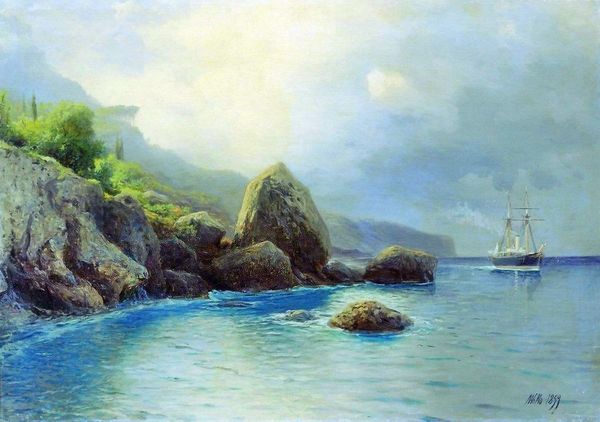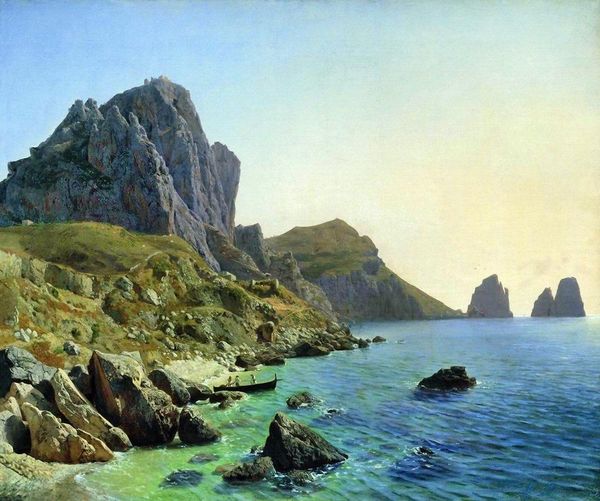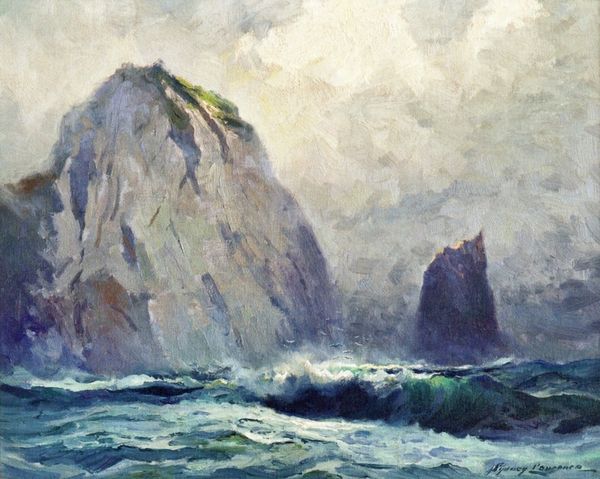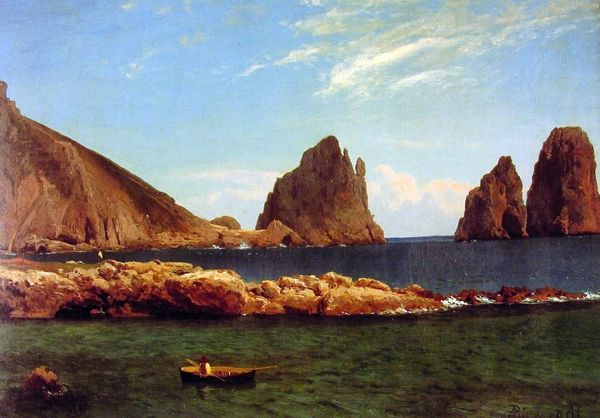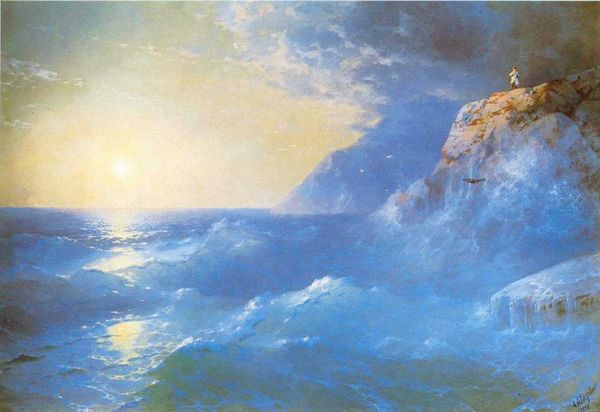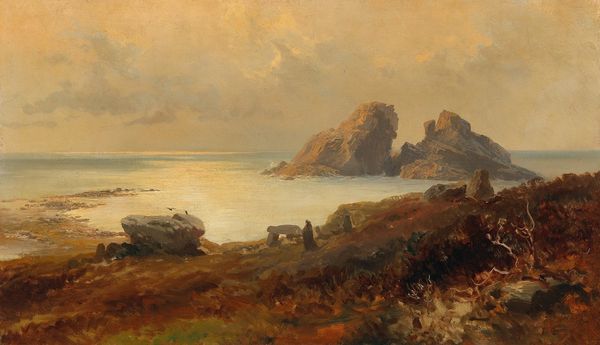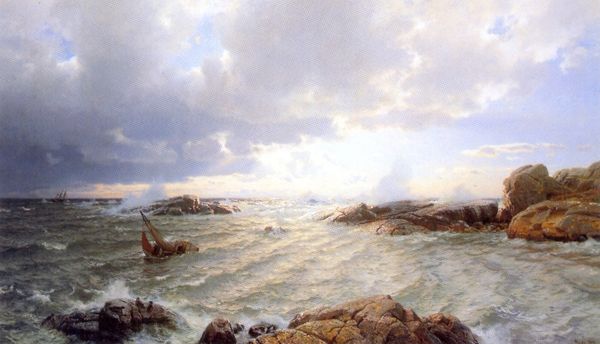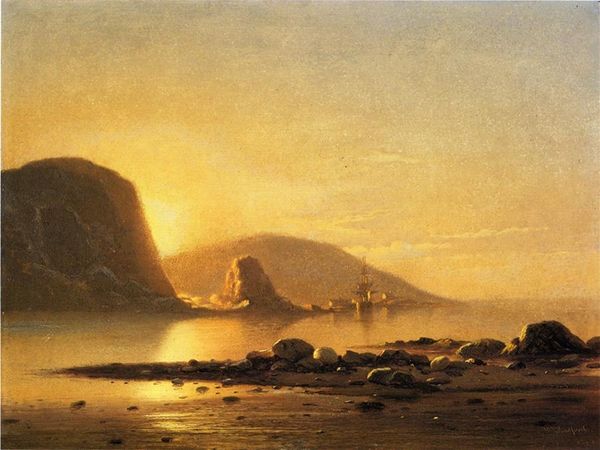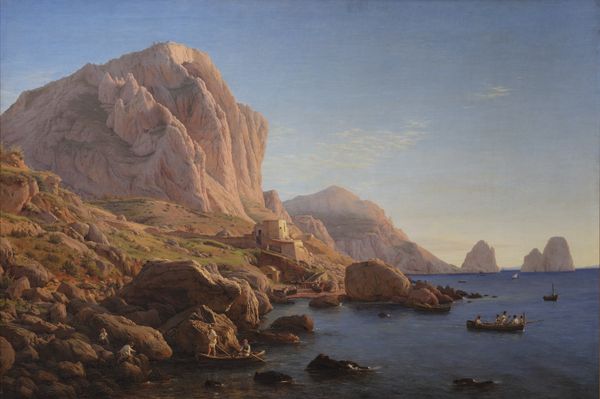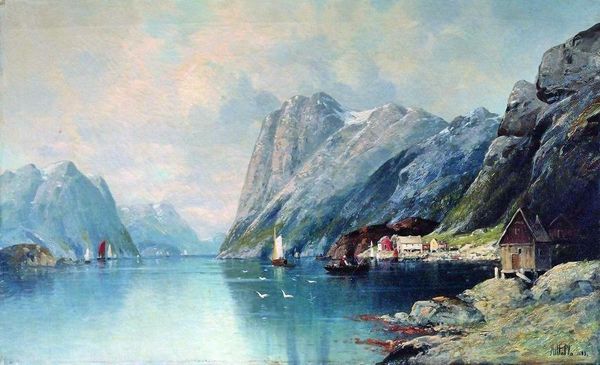
Copyright: Public domain
Editor: Standing before us is “Crimea. Monk and Diva Rocks,” an 1890 oil painting by Lev Lagorio. The overwhelming sensation is one of serenity; a gentle breeze seems to whisper off the canvas. The play of light on the water and rocks is particularly striking. What pulls you into this piece? Curator: It’s funny you mention whispers, because I always felt Lagorio was trying to capture the *song* of the sea. Think about the rocks jutting from the water, those ‘Monk and Diva’ figures – they're almost operatic in their posture. And that hazy sky? It’s not just atmosphere, it’s mood; a bittersweet longing that reminds me of a Chekhov play. Do you sense any of that romantic melancholy, too? Editor: I definitely get the romantic aspect! The vastness of the sea, the imposing rocks… it's like nature is putting on a dramatic show. But is it all melancholic, or is there perhaps some hope hinted in the bright hues, despite it being an "impressionist landscape," in which nature prevails in light, tone and movement? Curator: Good point! Perhaps it’s a qualified melancholy, then. Think of Romanticism itself—a rebellion against cold reason, a desperate search for something *more*. Maybe those vibrant blues and greens are glimmers of that 'more', like memories of sunnier days filtering through the clouds of the present. And those waves! A rhythmic pulse; sometimes crashing, sometimes receding, echoing life’s ebb and flow. Editor: So it's not just a pretty seascape; it's a reflection on life, loss, and the search for meaning, filtered through the Crimean landscape. Curator: Exactly! It’s Lagorio pouring his heart into paint, giving us a glimpse of not just a place, but a state of mind. Editor: That adds a whole new layer of appreciation. I won’t look at seascapes the same way again!
Comments
No comments
Be the first to comment and join the conversation on the ultimate creative platform.

